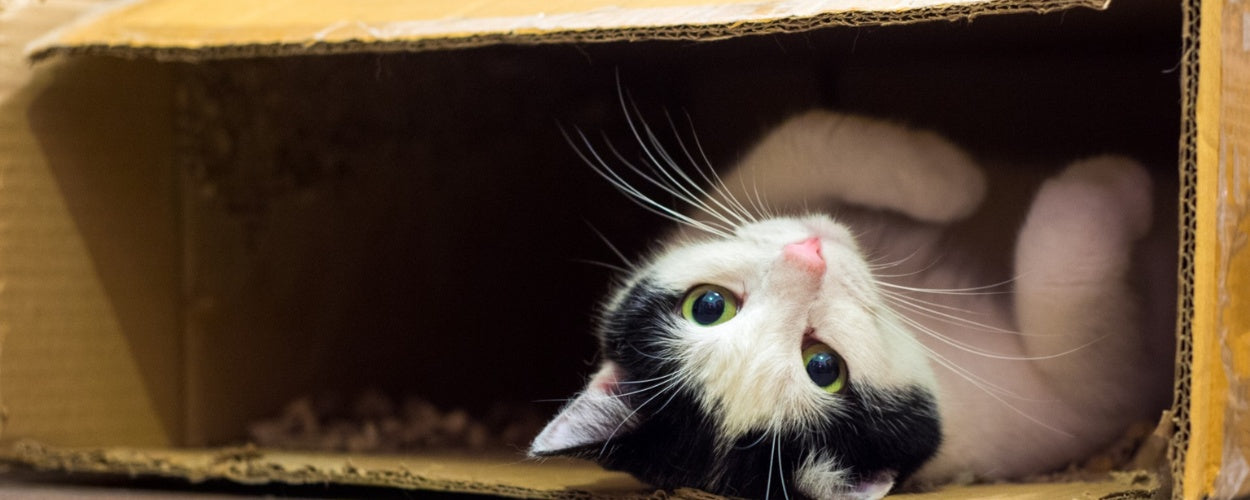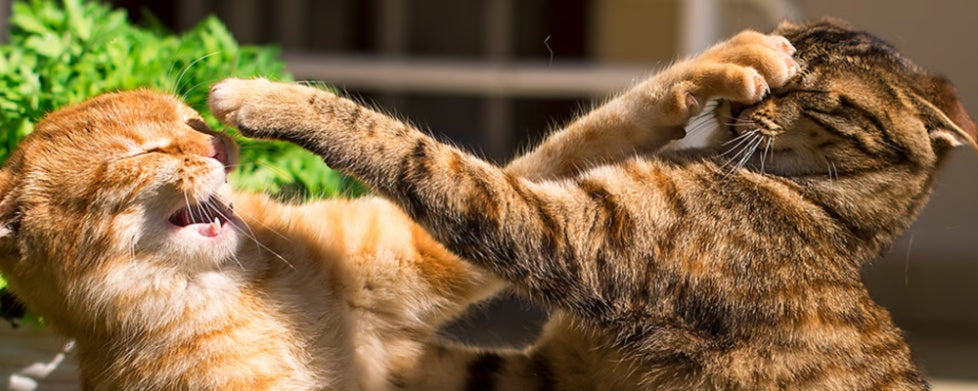Cats are masters at hiding illness, making it crucial for pet owners to prioritize their routine wellness exams. These comprehensive veterinary visits are not just for addressing visible health issues but also for detecting and preventing potential problems before they escalate. A routine wellness examination allows veterinarians to assess your cat's overall health, provide preventive care, and tailor health recommendations based on their age, lifestyle, and breed.
Why Routine Wellness Exams Are Important
Routine wellness exams are essential for maintaining your cat's long-term health and well-being. Cats often exhibit subtle signs of illness, which can go unnoticed until a condition has progressed significantly. Regular check-ups allow veterinarians to catch these issues early, offering better outcomes for your cat and reducing the risk of costly treatments down the line.
Benefits of Wellness Exams:
1-Routine exams can identify problems like dental disease, kidney issues, or obesity at an early stage, enabling timely intervention.
2-These visits ensure that vaccinations are up-to-date, protecting your cat from serious diseases such as feline distemper and rabies.
3-Wellness exams give vets the opportunity to provide customized advice on diet, exercise, and lifestyle adjustments to suit your cat’s individual needs.
4-Regular visits build trust between you, your cat, and your veterinarian, ensuring a smoother experience during emergencies or treatments.
What to Expect During a Wellness Examination
A routine wellness exam is an essential process that provides a complete assessment of your cat’s overall health. These exams play a critical role in maintaining your cat's well-being by identifying potential health issues early and offering preventive care tailored to their needs. While the specifics of a wellness exam may vary depending on the veterinarian, your cat’s age, and their health condition, the core elements remain consistent.
1. Medical History Review
The first step in a wellness examination involves a discussion about your cat's medical history, diet, lifestyle, and any recent behavioral or physical changes you may have observed. This part of the exam helps the veterinarian gain a full understanding of your cat’s health background. The vet may ask questions about your cat's eating habits, water intake, bathroom routines, and activity levels to identify potential areas of concern. This review provides context for the physical examination and ensures that no subtle health issues are overlooked. For example, changes in appetite or drinking habits can signal underlying kidney issues or diabetes, and abnormal behavior may point to stress or neurological conditions.
2. Physical Examination
The physical exam is a hands-on inspection of your cat’s body, allowing the veterinarian to check for any visible or palpable abnormalities. The vet examines your cat's eyes for signs of infections, cataracts, or abnormalities that might affect vision. They will also check the ears for ear mites, infections, or wax buildup. The mouth is inspected for tartar buildup, gum disease, or loose teeth, as dental health is closely tied to overall health. Your cat’s skin and coat are assessed for signs of dryness, irritation, parasites, or infections. A dull or patchy coat can be a sign of nutritional deficiencies or hormonal imbalances. The vet evaluates your cat's weight and overall body condition to determine whether they are underweight, overweight, or within a healthy range. Obesity, in particular, can lead to chronic issues such as diabetes or joint problems, making this assessment vital.
The physical exam is crucial for identifying subtle signs of discomfort or health problems that may not be immediately apparent to pet owners.
3. Vital Signs Monitoring
Monitoring your cat's vital signs is a standard part of every wellness exam. The veterinarian will measure your cat’s temperature, heart rate, and respiratory rate to ensure these indicators fall within normal ranges. Abnormalities in these measurements can be early signs of infections, heart conditions, or respiratory issues. For instance, a high temperature may indicate a fever or inflammation, while an irregular heart rate could signal underlying cardiovascular problems.
4. Diagnostic Testing
Depending on your cat’s age, breed, and medical history, the veterinarian may recommend diagnostic tests to get a deeper understanding of their health. These tests provide valuable insights that go beyond what can be observed during the physical examination. Common diagnostic tests include:
- Blood Tests: Blood work evaluates organ function, detects anemia, and identifies infections or other systemic issues. For older cats, blood tests are particularly important for monitoring kidney and liver health.
- Urine Analysis: A urinalysis helps detect urinary tract infections, kidney disease, or diabetes. It’s a quick but highly effective way to assess internal health.
- Fecal Exam: This test screens for intestinal parasites, such as worms or protozoa, which can cause digestive discomfort and affect overall health.
These diagnostic tools are invaluable for uncovering hidden health conditions and ensuring that your cat receives appropriate care.
5. Vaccination and Parasite Prevention
During a wellness exam, the vet ensures your cat is up to date on core vaccinations, such as those for feline distemper, rabies, and feline leukemia. Vaccinations play a critical role in protecting your cat from serious and potentially fatal diseases. Additionally, the veterinarian may recommend treatments for parasite prevention, including medications to guard against fleas, ticks, and intestinal worms. For outdoor cats or those exposed to other animals, these preventive measures are especially important.
What Does a Veterinarian Look for During the Exam?
Veterinarians perform wellness exams with a comprehensive approach, looking for subtle signs of illness, discomfort, or abnormalities. Below are the key areas of focus:
1. Mouth and Dental Health
Dental disease is a prevalent issue in cats and can lead to systemic health problems if untreated. During the exam, the veterinarian inspects the teeth and gums for tartar buildup, inflammation, or signs of oral pain. Early intervention can prevent more serious complications such as tooth loss or bacterial infections spreading to other organs.
2. Eyes and Vision
The veterinarian examines your cat's eyes for clarity, redness, or discharge, which may indicate infections or irritations. Conditions such as cataracts or high blood pressure often present visible signs in the eyes, making this evaluation essential.
3. Skin and Coat Condition
The quality of your cat’s skin and coat reflects their overall health. The vet will look for dryness, rashes, or parasites like fleas or mites. Changes in coat texture or color may also point to hormonal imbalances or nutritional deficiencies that need to be addressed.
4. Abdomen and Internal Organs
By palpating the abdomen, the veterinarian can assess the size, shape, and condition of internal organs, such as the liver, kidneys, and intestines. This hands-on evaluation helps detect abnormalities like tumors, swelling, or tenderness that may require further investigation.
5. Muscle and Joint Health
Especially for senior cats, the veterinarian evaluates muscle tone and joint function to identify signs of arthritis, mobility issues, or pain. Early detection of these issues can improve your cat’s quality of life through dietary changes, supplements, or physical therapy.
6. Behavioral Observations
The veterinarian observes your cat’s behavior throughout the exam. Unusual reactions, such as aggression or withdrawal, may indicate pain, stress, or underlying neurological issues that warrant closer attention.
By thoroughly examining these areas, veterinarians can uncover potential health problems and provide recommendations to address them effectively.
How Often Should Cats Have Wellness Exams?
The frequency of wellness exams depends on your cat's age, lifestyle, and overall health status. Here’s a general guideline:
1. Kittens (Under 1 Year Old):
Kittens should visit the vet every 3-4 weeks until they are about 4 months old. These visits are crucial for vaccinations, deworming, and monitoring their growth.
2. Adult Cats (1-7 Years Old):
Healthy adult cats should have a wellness exam at least once a year. These visits ensure their vaccinations are current and provide early detection of health issues.
3. Senior Cats (7 Years and Older):
Older cats require more frequent check-ups, typically every 6 months. Senior wellness exams often include additional diagnostic tests to monitor age-related conditions like arthritis, diabetes, or kidney disease.
4. Cats with Chronic Conditions:
If your cat has a chronic condition such as hyperthyroidism or diabetes, your veterinarian may recommend more frequent visits to monitor their condition and adjust treatments.
Conclusion
Routine wellness exams are an essential part of keeping your cat healthy and happy throughout their life. These visits provide veterinarians with the opportunity to detect potential health issues early, offer preventive care, and customize recommendations to suit your cat’s unique needs. By staying proactive about your cat’s health, you can ensure they live a longer, healthier life with a higher quality of care.
Regular veterinary visits not only benefit your cat but also strengthen the bond between you, your pet, and your veterinarian. Whether your cat is a playful kitten or a wise senior, routine wellness exams are the foundation of a comprehensive health care plan. Make it a priority to schedule these important check-ups and give your cat the gift of optimal health and well-being.








